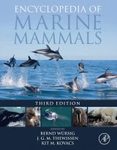By: Donald W Sparling(Author)
490 pages, colour photos, colour & b/w illustrations, tables
![Ecotoxicology Essentials Ecotoxicology Essentials]()
Click to have a closer look
About this book
Contents
Customer reviews
Biography
Related titles
About this book
Ecotoxicology Essentials: Environmental Contaminants and Their Biological Effects on Animals and Plants provides a fundamental understanding of this area for students and professionals in ecotoxicology, ecology, conservation, chemistry, public health, wildlife management, fisheries, and many other disciplines. Although new chemicals and potential problems are developed every year, a basic education is essential to address these new challenges, and this work gives such training. Written with the regulatory framework in mind, the material guides readers on modelling, how to conduct assessments, and human and wildlife risk, focusing on effects on animals rather than transport of chemicals. Simple discussions of chemistry are complemented by coverage on the behavior of the animal, dynamics of the ecosystem, real-life situations like drought, and predators in the system – i.e., the natural system versus the lab setting. The book's first section contains chapters on the principles of contaminant toxicology including a brief history of the science of ecotoxicology, basic principles of the science, testing methods, and ways of determining if animals have been exposed to either acute or chronic concentrations of contaminants. The second section deals with the primary classes of contaminants including their chemical characteristics, sources, uses, and effects on organisms. The third section focuses on more complex issues such as the regulation of pollution, population and community effects, risk assessment and modelling.
- Uses examples from both aquatic and terrestrial environments and species
- Includes a Terms to Know section and a list of study questions in each chapter, fostering a greater understanding of the issues
- Focuses on the effects of contaminants on wildlife while providing enough chemistry to allow a detailed understanding of the various contaminant groups
- Emphasizes natural examples and 'real' species, rather than laboratory studies on only a handful of organisms
- Features case histories, detailing actual events that include aspects of how the contamination occurred and its effects on wildlife
- Provides material from a wide variety of international sources
Contents
Section I: Basic Principles and Tools of Ecotoxicology
Chapter 1. An Introduction to Ecotoxicology
Chapter 2. Basics of Toxicity Testing
Chapter 3. Bioindicators of Contaminant Exposure
Section II: Chemistry and Effect of Major Families of Contaminants
Chapter 4. Organochlorine Pesticides
Chapter 5. Current Use Pesticides
Chapter 6. Halogenated Aromatic Hydrocarbons
Chapter 7. Polycyclic Aromatic Hydrocarbons
Chapter 8. Metals
Chapter 9. Other Contaminants
Section III: Identifying and Evaluating Large Scale Contaminant Hazards
Chapter 10. Population Ecotoxicology: Exposure and Effects of Environmental Chemicals
Chapter 11. Community-Level and Ecosystem-Level Effects of Environmental Chemicals
Chapter 12. Modeling in Ecotoxicology
Chapter 13. Chemical Stressors and Ecological Risk
Chapter 14. Contaminant Considerations in Humans
Chapter 15. Regulation of Environmental Chemicals and Damage Assessment
Chapter 16. Wrap Up
Customer Reviews
Biography
Donald W. Sparling is an Associate Professor at Southern Illinois University. Having written more than 100 publications, his research interests in wildlife ecology include contaminant ecology, specifically the effects of contaminants on amphibians, reptiles, and birds; and wetland ecology, including storm water wetlands and the development of an index of biological integrity for assessing wetland conditions.
By: Donald W Sparling(Author)
490 pages, colour photos, colour & b/w illustrations, tables


































